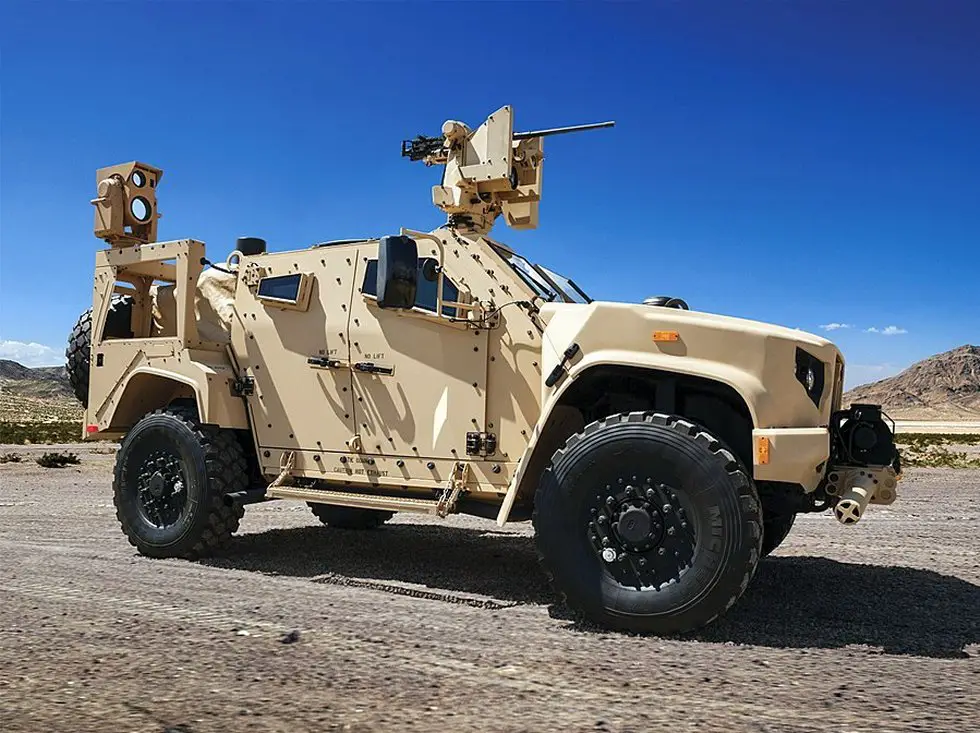Development of laser weapons has become a “must” for all the armed forces that can afford this technology, which means China and Russia for the time being. Hence the current effort made by the US Marine Corps to develop a laser air defense system based on its future Joint Light Tactical Vehicle (JLTV).

JLTV General Purpose variant fitted with a Boeing CLWS and a heavy machine gun-armed RWS (Picture source: Wikipedia)
At a hearing on 20 March before the Senate Armed Services Committee's subcommittee on sea power, Marine Lt. Gen. Robert Walsh, deputy commander for combat development and integration, talked about the Ground Based Air Defense Future Weapon System. U.S. ground forces have not faced enemy air attacks since the Korean War (1950-53). Subcommittee chair Senator Roger Wicker (R-Mississippi) claimed that "The Marine Corps has not updated its air-defense capability since the early 1990s."
Senator Wicker added that this subcommittee believes that the USMC and the Army should work together to meet similar requirements. The Marine Corps has been focused on countering threats from unmanned aerial systems (UAVs/drones are a preferred weapon of extremists in the Middle East) but is now starting to shift focus to longer-range threats such as aircraft and cruise missiles.
This is why the Corps is developing the Ground Based Air Defense Future Weapon System, which is mounted on a JLTV and features the same radar system that the Army is using for short-range air defense. Let’s recall that the fiscal 2019 budget includes $607 million to procure 1,642 JLTVs. This figure means that about one-third of the Humvee fleet will be replaced with the new vehicles.
The air defense system based on the JLTV is to use Stinger missiles but will also feature an electronic warfare capability. A laser weapon is also tested, a challenge residing in a useful range. Moreover, "If you want to kill a UAV, you have to know where to shoot," said Richard DeFatta, director of the Air and Missile Defense Directorate at Space and Missile Defense Command. "Just shooting a hole in the wing may not bring it down. You have to know which component to aim at."
The Army's Space and Missile Defense/Army Strategic Forces Technical Center in Huntsville, Alabama, the lead Army agency for developing high-energy laser weapons, is working on three systems with anti-UAV capabilities. The High Energy Mobile Laser Test Truck, or HELMTT, aims to demonstrate a vehicle-mounted 10-kilowatt laser rugged and practical enough to use on the battlefield. The project was originally the High Energy Laser Mobile Demonstrator (HEL MD), until the Army opted to mount a smaller laser on a Heavy Expanded Mobility Tactical Truck. HEL MD managed to shoot down a 22 to 55 pound Class 2 UAV during a 2014 test at the High Energy Laser Systems Test Facility at White Sands Missile Range, New Mexico. The Army's Space and Missile Defense Command plans to eventually develop a 100-kilowatt weapon.
As for private initiatives, Boeing has unveiled a mobile laser, based on off-the-shelf manufacturing lasers, that can be used against UAVs. The Compact Laser Weapon System (CLWS), a Boeing internal research project, is a 2-kilowatt weapon that shot down a Class 1 UAV with a 10-second laser shot during the Pentagon's Black Dart anti-drone exercise in 2015. This kind of system, once mounted on a light 4x4 vehicle like the JLTV, would fill a gap in the USMC's range of air defense weapons.














